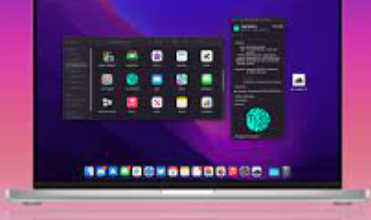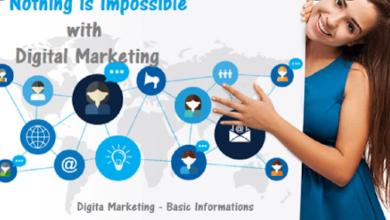The latest trends in billing and invoicing software

A growing number of companies are shifting their invoicing to the cloud, embracing automation improvements, and billing customers on mobile devices as technological advancements urge a global shift away from outdated business operations procedures.
While the invoicing software is becoming more automated and intuitive, it is still important to be aware of the latest developments in billing and invoicing software so that you can take advantage of these advancements for the greatest benefit to your company.
A customized billing solution keeps up with the latest developments in automation, mobile-first development, and cloud-based operations to keep your business ahead of the competition. You can incorporate the billing software innovations of 2025 today by staying ahead of the competition. Check out these tips.
Automation
Manually billing, managing subscriptions, and processing refunds was the norm in the past. Larger companies usually needed multiple full-time employees to handle invoicing, which resulted in higher costs and pinned down talented assets.
Automating all the steps of the invoicing process is now possible. A company’s custom billing software can be set up in a matter of days and will run for years without requiring any manual intervention. Rather than relying on human operators to perform simple tasks, automated machine learning algorithms are now capable of handling complex tasks. Billing software can also calculate when bills should be issued, how much taxes should be charged, and how much are to be refunded.
Automating payment retries and offering coupons and additional options without manual intervention has also become possible. Moreover, billing software security is improved by automating operations by eliminating human error and controlling them from one location.
Billing software automates the payment process, thereby eliminating the need to manually intervene whenever a payment fails, reducing fulfillment time. Manually calculating the costs of upgrades and downgrades is also required in traditional billing software. It is especially tedious to recalculate invoice amounts manually for subscription-based services or transactions that use percentages.
Mobile Invoicing
The mobile invoicing process was clunky and susceptible to errors a decade ago. Over the past few years, mobile billing software has evolved greatly, and its integration with iOS, Android, and other mobile platforms is now seamless and intuitive.
Increasingly, consumers and professionals are using mobile devices to carry out their daily tasks instead of laptops and desktop computers. The trend is especially intense in developing countries like India, where cash access has been curtailed and electronic transactions strongly encouraged.
Businesses can now operate in decentralized locations using mobile invoicing, and employees can virtually never have to go into the office. Reduction of paperwork, improved efficiency, and increased job satisfaction result in lower turnover rates and faster growth.
If you use apps like Square to integrate mobile billing into your operations, you can invoicing for free. Companies can embrace electronic invoicing as a result of the reduced onboarding time, and most mobile billing platforms have a desktop counterpart.
The seamless integration of mobile and desktop operations with the cloud is allowing mobile invoicing to play a key role in new customer acquisition, subscription management, and more. There has been a rapid shift towards the use of mobile devices for most business operations due to the availability of detailed analytics engines in most mobile billing platforms.
Migrating to the cloud
It was not uncommon for businesses around the world to handle invoicing exclusively on paper only a decade or two ago. It was already a big step for many companies to move to digital billing platforms, but the dangers of data loss and the need to constantly backup data made this transition even more complicated.
The concept of cloud-based invoicing was born out of a need to fill the gaps in the traditional electronic billing model. Businesses can now store data in an off-site location without worrying about data loss, and for the first time, billing software is concern-free.
The cloud is relying on by businesses for much more than just data protection these days. The use of cloud-based invoicing software also provides better collaboration, faster access to data, and simpler implementation than non-cloud options. In invoice tracking software development, the focus has more and more been on cloud-based operations to give companies a unified view of their invoices.
Existing billing software providers have implemented cloud capabilities to some extent, however, the adoption of the cloud has also led to the development of cloud-only billing software providers. Companies were hesitant to migrate to cloud-based billing software due to security concerns.
This sticking point has been addressed by developers of cloud-based billing software by integrating additional security measures. As the cloud computing world has grown more secure, so has cloud-based invoicing, for instance, which is now utilizing advanced algorithms to encrypt invoice data.
Invoicing Is Evolving Rapidly
We will look back on manual invoicing in five years as archaic. The cloud organizes the invoicing efforts of an entire company into one format that can be accessed from multiple devices, mobile devices are increasingly being used for establishing and monitoring invoicing operations, and automation is rapidly taking the burden of invoicing away from humans.
For companies that don’t mind doing things in the same way as their competitors, pre-existing tools can be suitable for digital invoicing, but it’s often smarter to develop custom software that takes your organization’s unique requirements into account.
The development of custom invoicing software is intuitive and scalable, and it is fully customized to your organization structure and long-term business goals. Billing and invoicing software has been developing at a rapid pace, reducing mistakes, improving efficiency, and promoting growth. You can proactively prepare to compete in the business environment of 2025 and beyond by embracing the evolution of invoicing today.




